Yaatra is on the site of the old Westminster Fire Station, a listed building dating back to 1906. Its executive chef is Amit Baygal, who was formerly head chef at Kanishka. The restaurant actually opened under a different name (“Mathura”) but changed ownership, and was relaunched with mostly the same kitchen and front of house team in October 2022 as Yaatra. The ground floor dining room is large and smartly decorated, and there is a further big room in the basement, plus two private dining rooms. The restaurant can accommodate 180 guests at one time, so this is a big operation. Tonight the kitchen was headed by chef Velino Goes.
The wine list had 103 labels and ranged in price from £35 to £1,800, with a median price of £118 and an average markup to retail price of 4.1 times, which is simply outrageous even by London standards (of course service is then added on top of this markup). Sample references were Gewurztraminer Cave de Cleebourg 2018 at £58 for a bottle that you can find in the high street for £13, Henschke Eden Valley Semellion (sic) 2017 at £88 compared to its retail price of £24, and Lancaster Mount Barker Shiraz Plantagenet 2015 at £91 for a wine that will set you back £28 in the high street. For those with the means there was Puligny-Montrachet Les Meix Olivier Leflaive 2018 at £190 compared to its retail price of £50, and Clos de Vougeot Grand Cru Cuvee Classique Chateau de la Tour 2014 at £450 for a wine whose current market value is £186. The list had quite a lot of errors running through it, not just typos (misspelt producers and regions) but other more puzzling things. For example, the Bernkasteler Badstube Riesling Kabinett Feinherb Dr Thanisch is most assuredly grown in the Mosel region in Germany, and not in Austria as the list confidently states. Not wishing to pay this level of wine markup, I drank beer.
We shared several starters, main and desserts. Konkani scallops (Konkan is a region on the west coast of India) were served with masala pea puree, Konkani butter puree and a garnish of pea shoots, oscietra caviar, tamarind glaze and a touch of lime to provide some sharpness. The pan-seared scallops were notionally from Orkney but although they were nicely cooked and had good sweetness they were unusually small. I am not sure about the seasonality of pea puree in November but the dish was nice enough (13/20). The best starter was Amritsari prawns, a Punjabi dish where the large prawns were cooked in a tandoor after being marinated with carom seeds, and yoghurt, served with mint chutney and pepper bhajia. The prawns were carefully and evenly cooked and had nicely absorbed the spices of their marinade (14/20).
Coorg beef shukka (aka sukka) is a dish from Karnataka in the south west of India, Coorg being a district there now known as Kodagu. It is a dry beef curry that is braised for eight hours. This was served with a fermented rice cake and flamed coconut. This sounded better than it was, the brisket of beef used being uneven in its texture. Some pieces were tender, others still chewy, and there was quite of a lot of unrendered fat. This had the potential to be a very tasty dish, but it needed to be consistently tender and was not (12/20 is kind). Chicken dumplings were resting in a watery broth of sweetcorn and snow peas, a sort of watery bouillon. This added nothing, though the chicken dumplings were decent enough in texture but for me were rather bland (12/20).
Rajasthani roe deer featured in a dish called laal maas (literally “red meat” in Hindi), a Rajasthan dish that usually uses mutton. Spiced venison tenderloin was served with organic roasted beetroot, saffron mash and some rather greasy ghee bajra bread. The meat was nicely cooked, initially pan-seared and then under a salamander, to medium rare and went well with the beetroot, though the dish was quite bland. Laal maas is usually a fiery hot dish laced with chillies, so this was a rather sedate version (13/20). Chicken biryani lacked a pastry seal and the rice was simply not very aromatic, which should be the main point of biryani. Moreover, the chicken thigh meat was rather dried out (11/20). Garwhal goat osso bucco curry had goat cooked with ginger root, Himalayan spices, caramelised onion sauce and gucchi pulao, a Kashmiri dish of morels with garlic and spices. This sounded better than it was, the goat meat rather chewy in places, though I did like the morels (12/20). A side dish of channa had reasonably tender chickpeas but was quite bland (12/20) and a black dhal was decent but lacked the dark, smoky richness of the best of its breed (12/20). A basket of mixed Indian bread was fine (13/20). The best side dish was methi mutter mushrooms, which had button mushrooms with peas cooked with fresh fenugreek leaves and a creamy onion sauce. This was excellent, the mushrooms nicely cooked and the distinctive taste of fenugreek coming through well (14/20).
Rasmalai cheesecake was flavoured with saffron and came with strawberries (in November?) and kalamansi sorbet. The sorbet was actually very good but the wildly off-season strawberries were unsurprisingly flavourless, but the cheesecake texture was decent enough (13/20). Chocolate dessert had chocolate and coffee with orange and chilli biscuit on a bed of chocolate soil. This was quite pleasant, the orange and chocolate a classic flavour combination, the texture quite good (13/20). Rose falooda had rose kulfi, saffron falooda, rose syrup jelly and rabdi, a thickened sweet milk dish of northern India. Falooda has Persian origins and involves vermicelli. The saffron flavour was quite strong and the rose aroma quite potent, but this was a nice enough dish, and one that was prettily presented (12/20). Peach mousse in a white chocolate sphere with mixed berries was flambeed at the table, served with cardamon ice cream. This was theatrical but the end result tasted odd to me. Peaches are out of season and what limited fruit flavour there was dominated by the white chocolate (11/20).
The staff were good, with a patient waiter who was able to answer our questions without recourse to the kitchen, and a very pleasant Bulgarian restaurant manager. The overall meal was between 12/20 and 13/20 level, and I will give it the benefit of the doubt, but there was quite a lot of inconsistency. The best dishes like the tandoori prawns show that there is some ability in the kitchen. The bill came to £44 a head, but this was taking advantage of a half price introductory deal. A more normal cost per person might be £75 or so, as for example the full price of the roe deer dish was £38. It would be more still if you ventured into the expensive wine list, which really needs an overhaul in my view. The consistency issues will need to be fixed if they are to fill this huge site, which has little passing trade.
























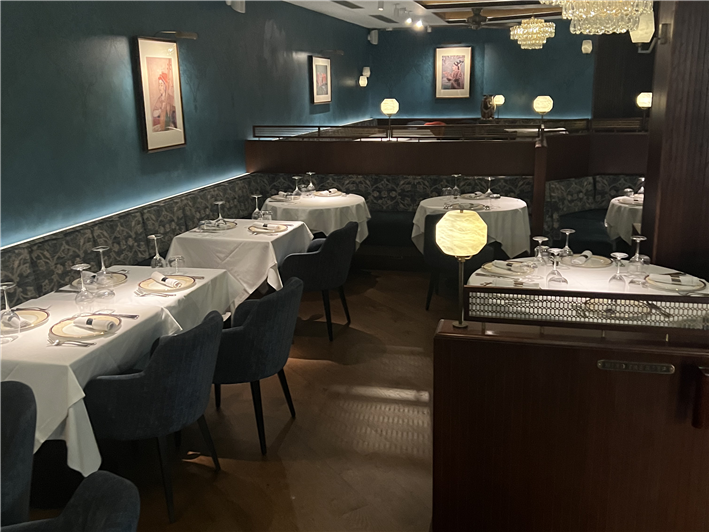

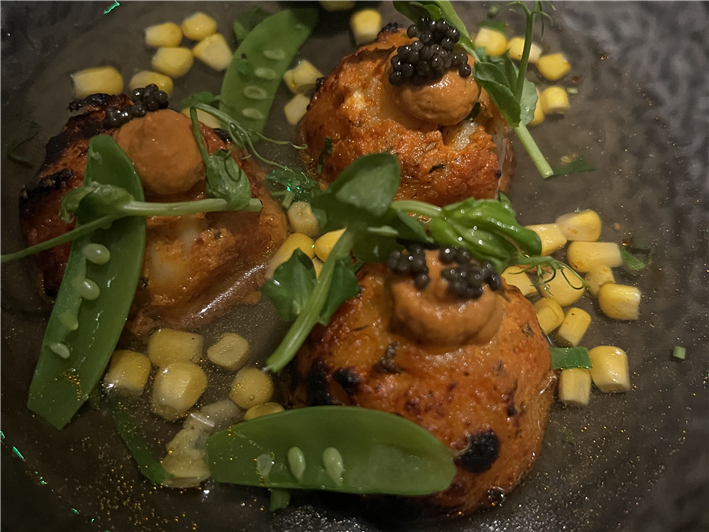
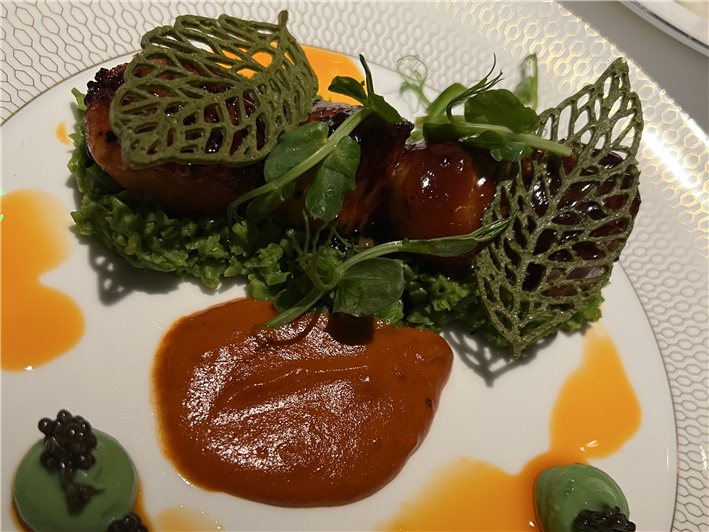

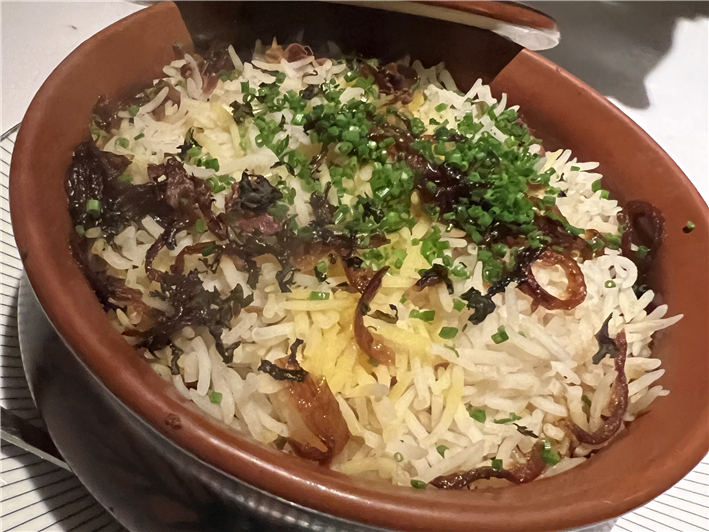
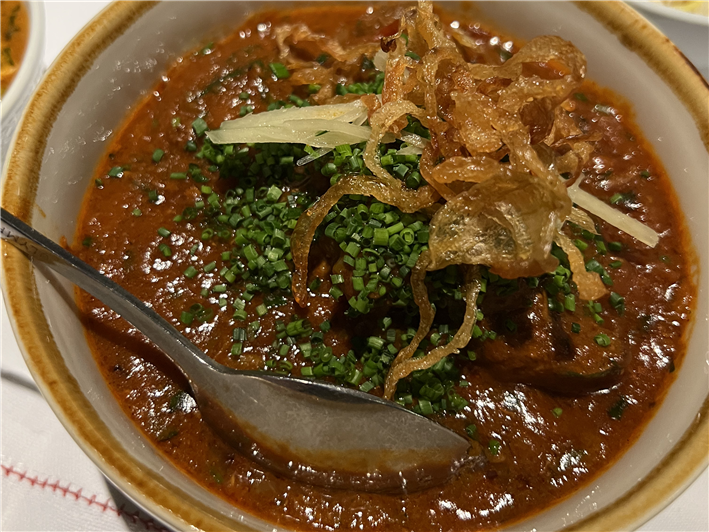
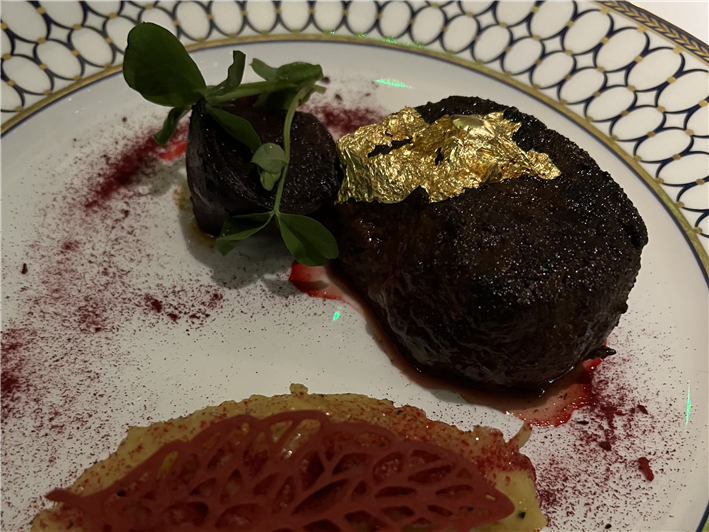

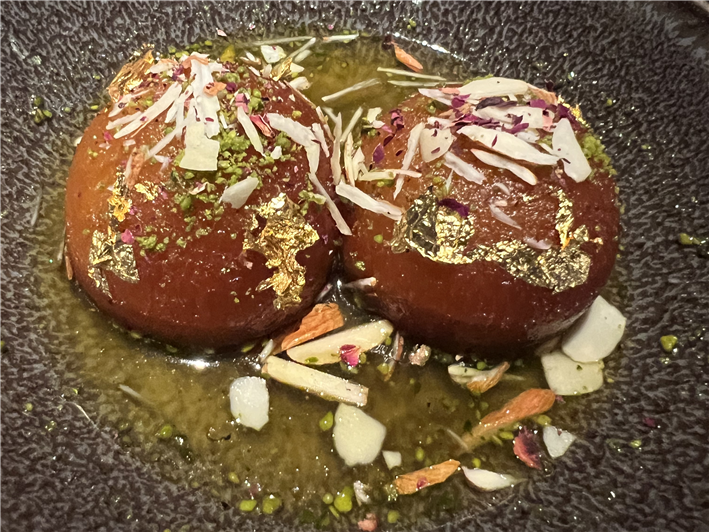
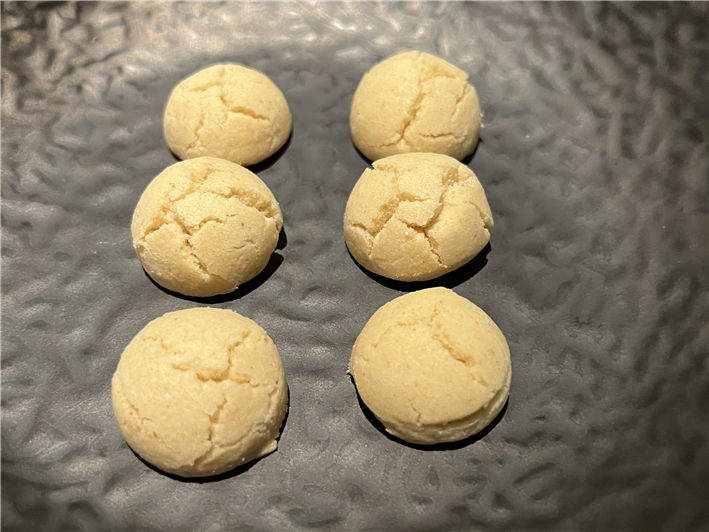
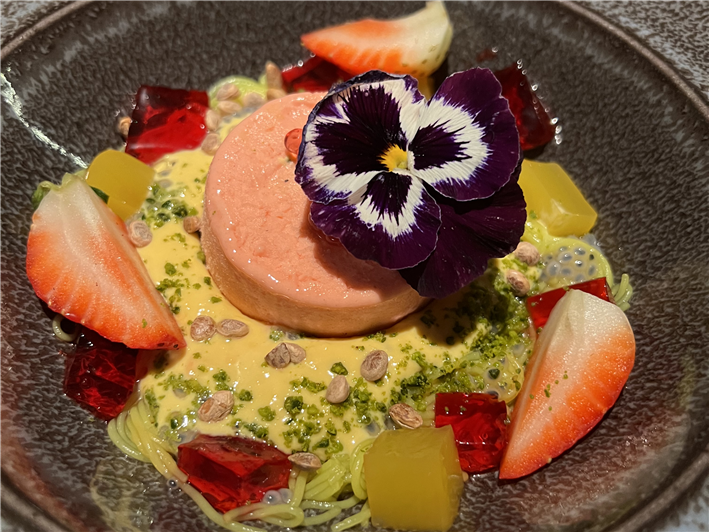
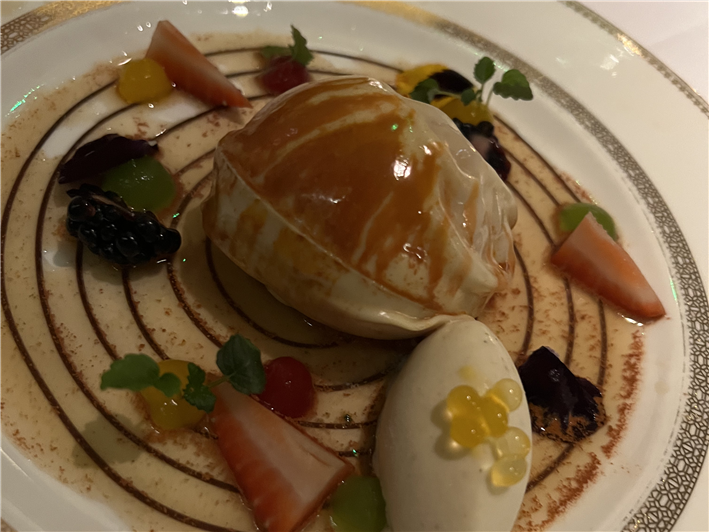

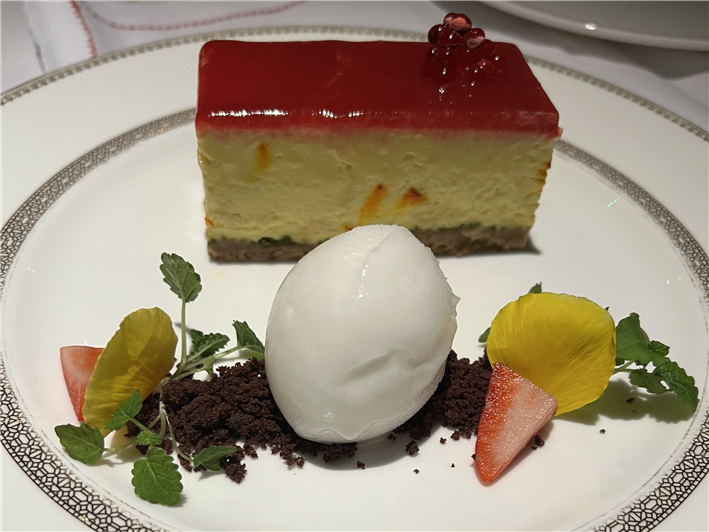
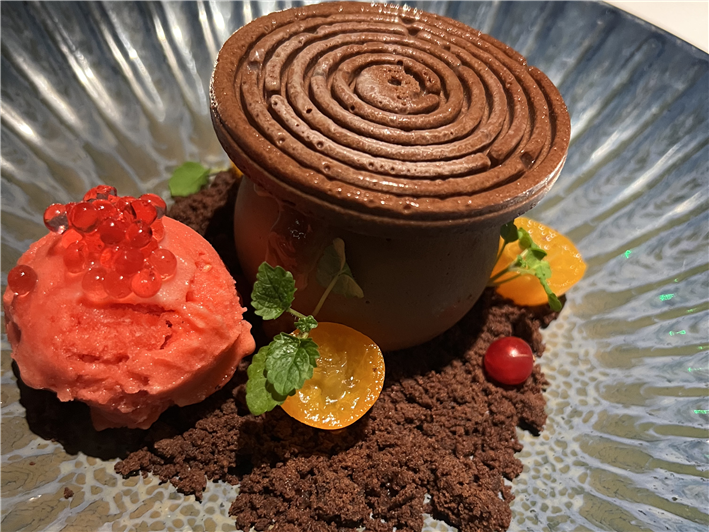


Alex
In recent years the UK has started to see, no doubt because of a large increase in Chinese students, a growing number of Chinese restaurants starting to specialise in regional areas of Chinese cuisine and not just basic Cantonese cooking. I really wish Indian restaurants would go the same way and be more regional. This review seems to be the equivalent of going to a 'European' restaurant and eating a mix of French, Italian, Spanish and German food. Quantity isn't the same as quality!